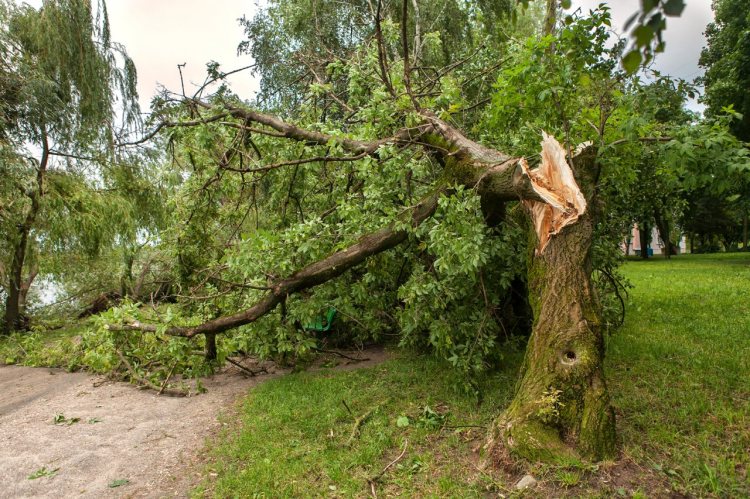It’s not over yet. Just past the peak of hurricane season weather forecasters have already had to resort to the Greek alphabet to name storms. And with severe storms and tornados appearing around the country, it is more important than ever to take steps and be prepared before, during and after a storm.
One of the biggest threats during any storm is tree damage. The following tips from expert arborist and STIHL spokesperson Mark Chisholm can help you protect yourself, your family and your property from a storm.
Before the storm. Develop a relationship with a certified tree care professional. By choosing the right company ahead of time, you’ll likely be prioritized as an existing customer when a storm does hit.
Conduct a pre-storm assessment and identify trouble spots. Look for cracks in tree trunks or major limbs, hollow or decayed trees, limbs extending over a roof, or trees in close proximity to power lines.
Take measures to prevent damage. Pre-emptive action will limit potential damage. Consider calling a professional to remove dead, diseased or damaged limbs or trees with large cavities. Prune branches that are too close to your house and over the street. Clean gutters to prevent water damage. Always call a professional to assess and/or remove anything within close proximity to utility lines. Never attempt to do this yourself.
During the storm. Don’t try to be a hero. Your property is not more important than your life. Prepare in advance, follow guidelines for evacuation and shelter.
After the storm. More people are injured after a storm than during one. Some things could be a threat to your life such as large broken or hanging limbs where chainsaw work is needed, or branches that are too close to a utility line. Put safety first. Evaluate what you can handle and what’s for a professional – anything not on the ground should definitely be handled by a professional. Never approach or attempt to move downed utility lines and report branches close to or touching utility lines immediately.
Evaluate damage. A storm-damaged tree may not have to be removed. Inspect your trees to see if they’re healthy despite storm damage. If at least 50% of the tree’s crown is still intact, and the remaining branches can form a new branch structure, then there is a good chance the tree can be saved.
Repair minor damage & debris. Remove any broken branches, stubs or jagged remains of limbs. Smaller branches should be pruned at the point where they join larger ones. Don’t worry if the tree’s appearance is not perfect.
Comments are not available on this story.
Send questions/comments to the editors.


